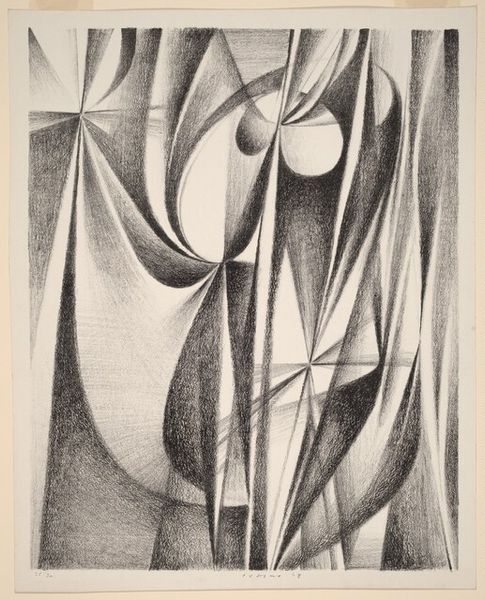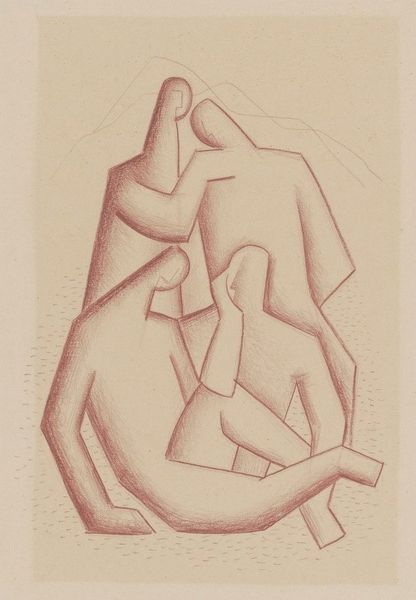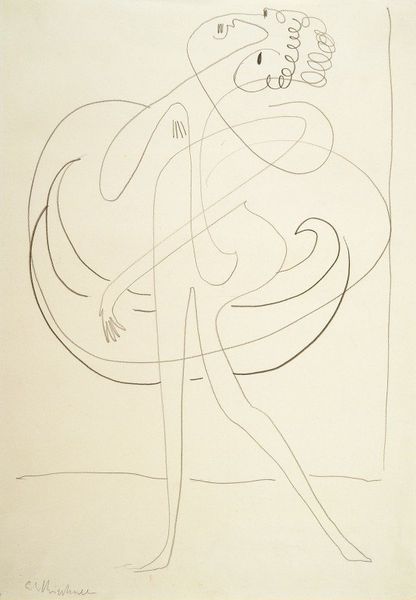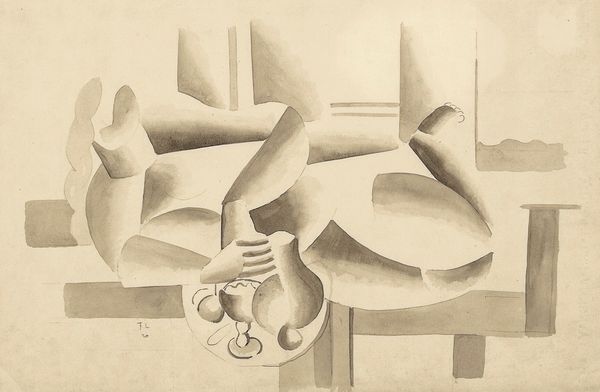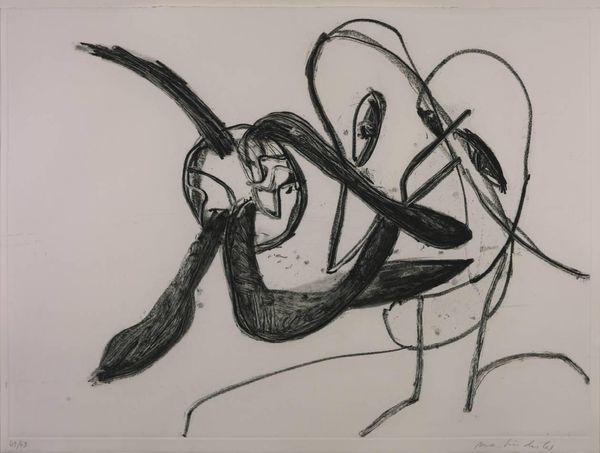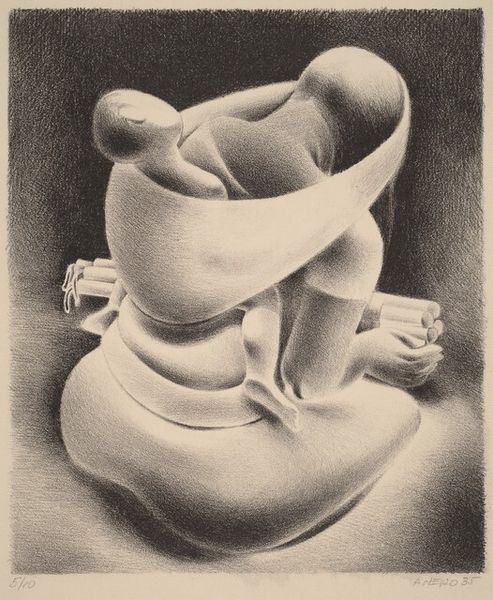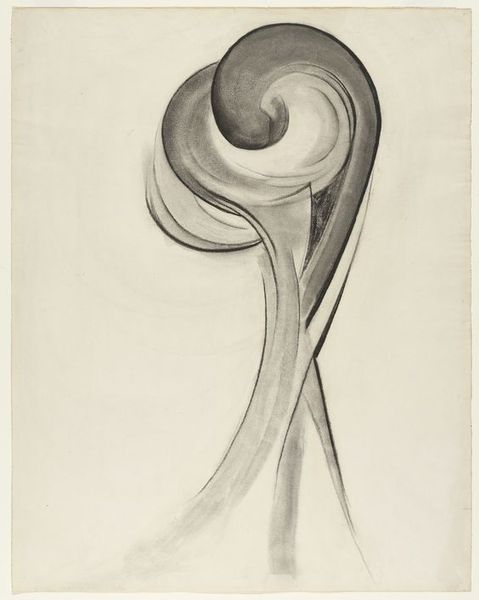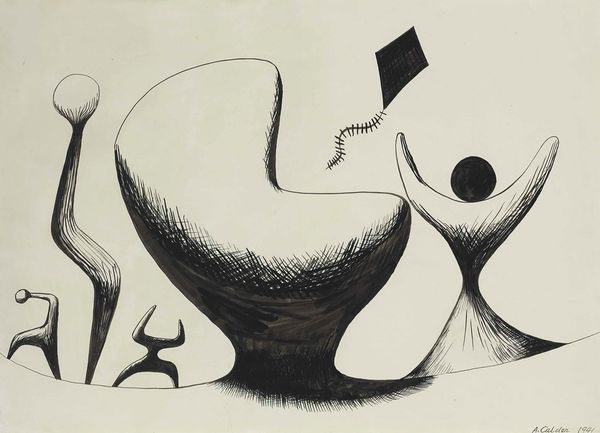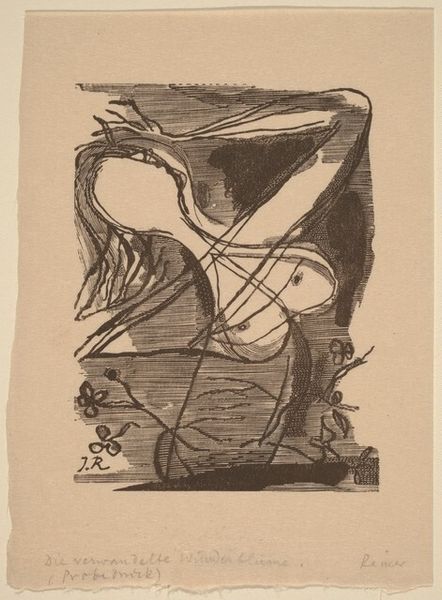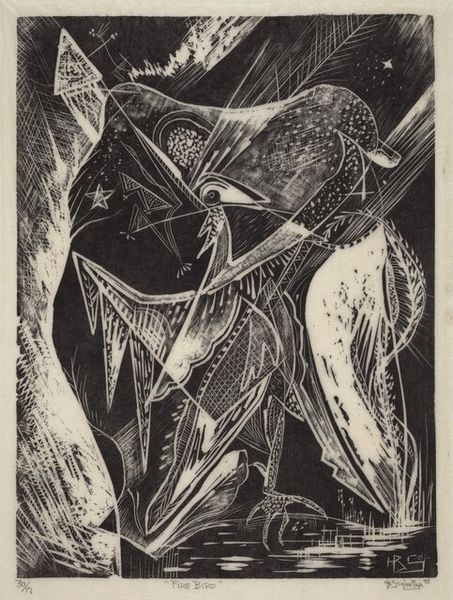
drawing
#
portrait
#
drawing
#
caricature
#
charcoal drawing
#
figuration
#
form
#
abstraction
#
line
#
portrait drawing
#
portrait art
Dimensions: overall: 53 x 56 cm (20 7/8 x 22 1/16 in.)
Copyright: National Gallery of Art: CC0 1.0
Curator: Oh, my goodness, this character…he seems burdened, doesn't he? Carrying something heavy, perhaps a past sorrow? Editor: That's precisely the feeling it evokes. We're looking at "Arlequino," a 1954 drawing by Omar Rayo, rendered in charcoal. Notice how Rayo distorts and reimagines the figure, pushing beyond traditional representation? Curator: Distorts is a gentle word. The lines, so fluid yet constrained, make me think of emotional knots, you know? All bound up, yearning for release, as though all that is contained in the hand trying to tune his own instrument! Editor: Indeed, Rayo’s strategic use of line evokes tension, and there's a real elegance, too. The instrument that "Arlequino" handles takes center stage—symbolically, perhaps his heart or inner voice. Think of Harlequin figures throughout art history and literature. This figure’s posture seems both proud and burdened. The almost empty stage below his feet—with the fallen or abandoned tear and little, silent soul–suggests to me he has suffered a recent drama. Curator: That tear almost reflects back the sky. Yes, his whole being radiates struggle, amplified by the monochrome palette. Rayo gives the scene such muted tones, doesn't he? Very thoughtful in his composition. I love the way he gives an almost tactile quality using this medium. Editor: Consider also how abstraction plays a part here. Rayo strips away the superficial, aiming to reveal something essential. The "Arlequino" archetype carries a deep well of emotional and cultural memory. Are we seeing this Colombian artist reflecting a sense of internal exile and longing? The instrument can’t possibly give sound in its incomplete state; maybe it is our sense of incompleteness which speaks here? Curator: Maybe. It’s a visual poem about sorrow, a quiet echo across cultures and centuries. We glimpse a feeling, and feel it echo into something close and near to ourselves. Editor: I agree. Rayo makes tangible an intangible melancholy. It’s a testament to the expressive potential that unfolds when art delves into what it truly means to live and suffer, on the universal stage, even, maybe, if just inside your own imagination.
Comments
No comments
Be the first to comment and join the conversation on the ultimate creative platform.

